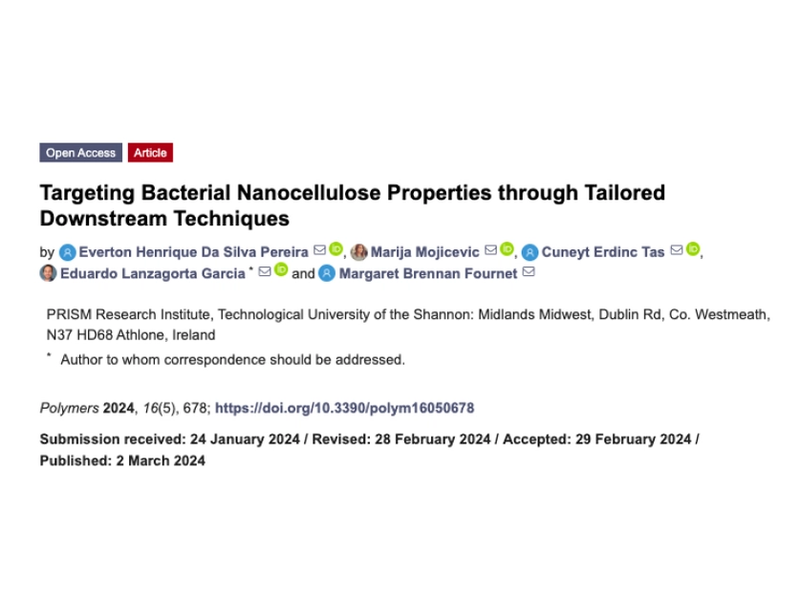Targeting Bacterial Nanocellulose Properties through Tailored Downstream Techniques

Bacterial nanocellulose (BNC) is a biodegradable polysaccharide with unique properties that make it an attractive material for various industrial applications. This study focuses on the strain Komagataeibacter medellinensis ID13488, a strain with the ability to produce high yields of BNC under acidic growth conditions and a promising candidate to use for industrial production of BNC. A comprehensive investigation into the effects of downstream treatments on the structural and mechanical characteristics of BNC was conducted. When compared to alkaline-treated BNC, autoclave-treated BNC exhibited around 78% superior flexibility in average, while it displayed nearly 40% lower stiffness on average. SEM analysis revealed distinct surface characteristics, indicating differences in cellulose chain compaction. FT-IR spectra demonstrated increased hydrogen bonding with prolonged interaction time with alkaline solutions (NaOH and KOH). A thermal analysis showed enhanced thermal stability in alkaline-treated BNC, withstanding temperatures of nearly 300 °C before commencing degradation, compared to autoclave-treated BNC which starts degradation around 200 °C. These findings provide valuable insights for tailoring BNC properties for specific applications, particularly in industries requiring high purity and specific mechanical characteristics.
Read more here: https://www.mdpi.com/2073-4360/16/5/678